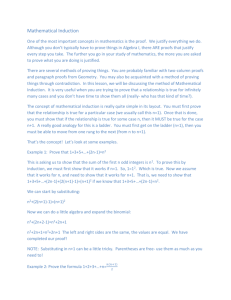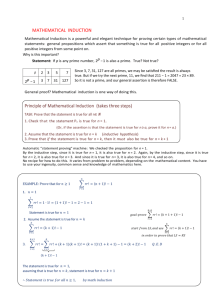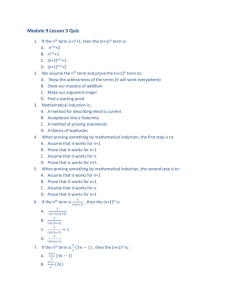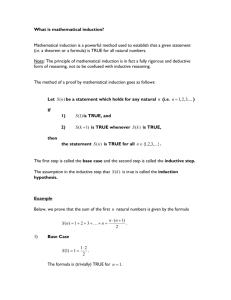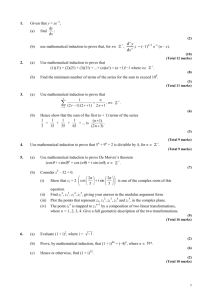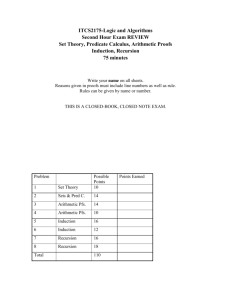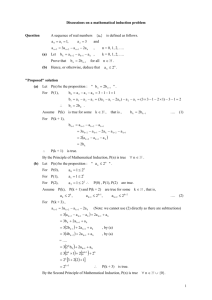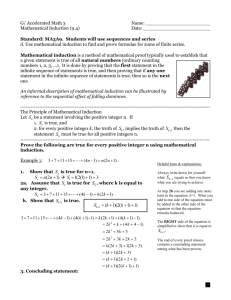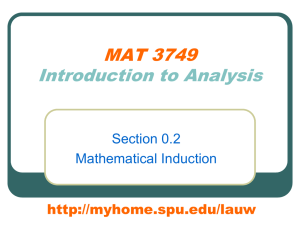Sample learning activity number proofs by induction
advertisement
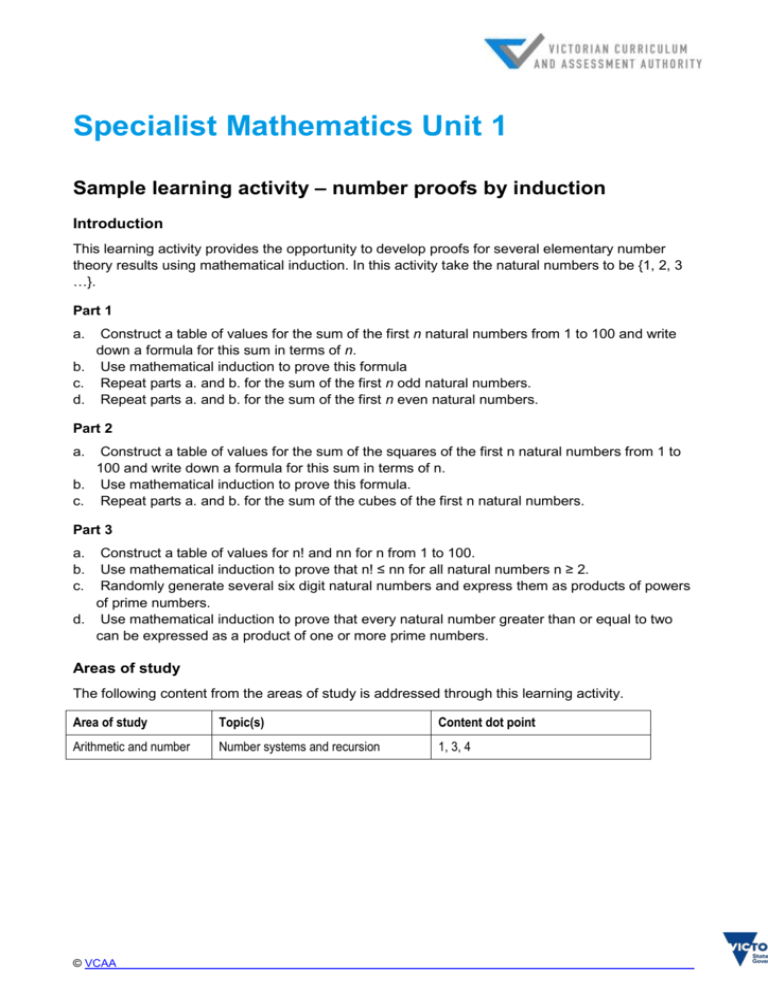
Specialist Mathematics Unit 1
Sample learning activity – number proofs by induction
Introduction
This learning activity provides the opportunity to develop proofs for several elementary number
theory results using mathematical induction. In this activity take the natural numbers to be {1, 2, 3
…}.
Part 1
a.
Construct a table of values for the sum of the first n natural numbers from 1 to 100 and write
down a formula for this sum in terms of n.
b. Use mathematical induction to prove this formula
c. Repeat parts a. and b. for the sum of the first n odd natural numbers.
d. Repeat parts a. and b. for the sum of the first n even natural numbers.
Part 2
a.
Construct a table of values for the sum of the squares of the first n natural numbers from 1 to
100 and write down a formula for this sum in terms of n.
b. Use mathematical induction to prove this formula.
c. Repeat parts a. and b. for the sum of the cubes of the first n natural numbers.
Part 3
a.
b.
c.
Construct a table of values for n! and nn for n from 1 to 100.
Use mathematical induction to prove that n! ≤ nn for all natural numbers n ≥ 2.
Randomly generate several six digit natural numbers and express them as products of powers
of prime numbers.
d. Use mathematical induction to prove that every natural number greater than or equal to two
can be expressed as a product of one or more prime numbers.
Areas of study
The following content from the areas of study is addressed through this learning activity.
Area of study
Topic(s)
Content dot point
Arithmetic and number
Number systems and recursion
1, 3, 4
© VCAA
number proofs by induction
Outcomes
The following outcomes, key knowledge and key skills are addressed through this task.
Outcome
Key knowledge dot point
Key skill dot point
1
1
1, 3, 4
2
1, 2, 4
2, 4
3
2, 5
2, 4,10
© VCAA
Page 2

